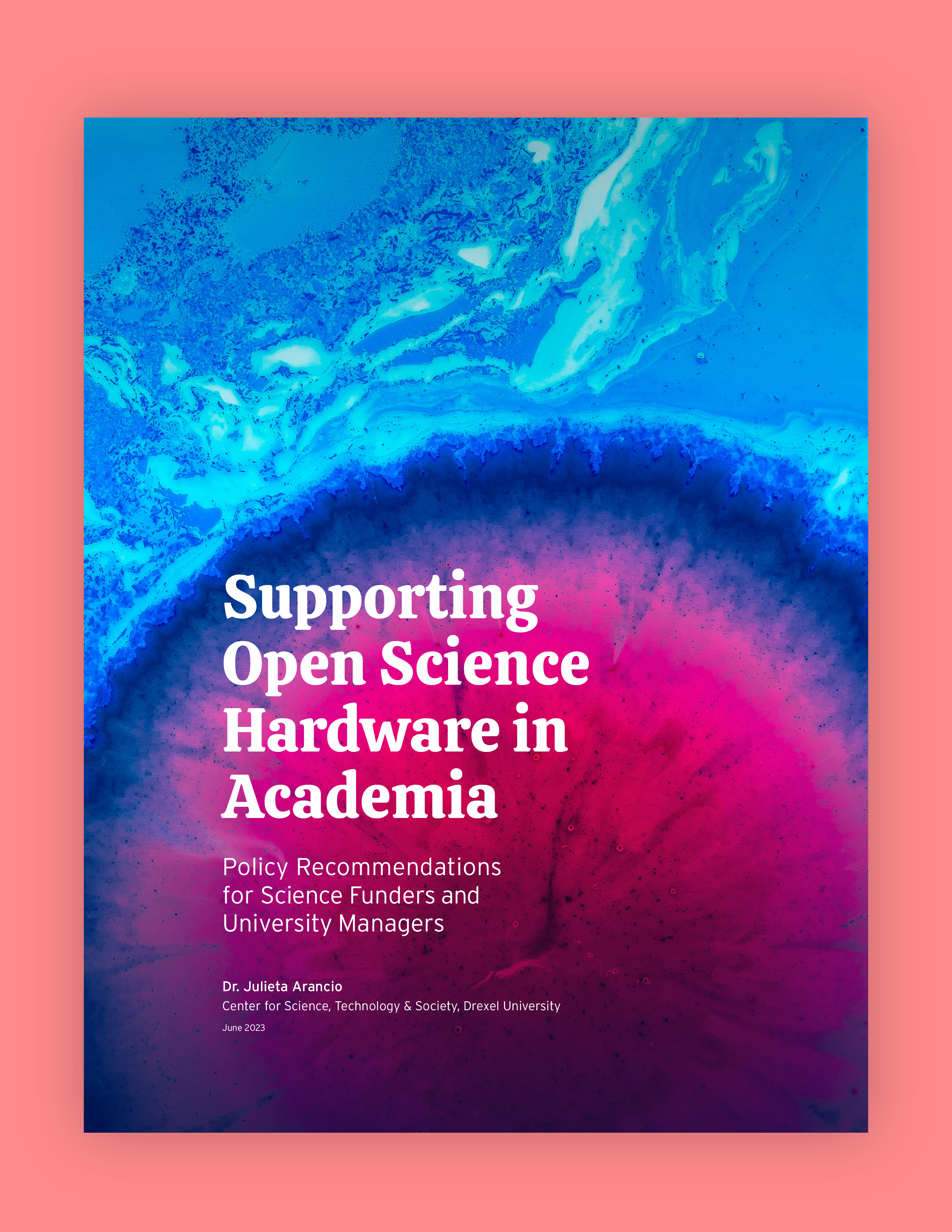Supporting
Open Science Hardware in Academia
This report provides research institutions and funders with the strategies to implement and support open science hardware in academia.
What is open science hardware?
“Open science hardware” (OSH) refers to any piece of hardware used for scientific research that can be obtained, assembled, used, studied, modified, shared, and sold by anyone. It includes standard lab equipment as well as auxiliary materials.
Open science is becoming the new paradigm for science, technology and innovation worldwide (NASE 2018; EU). In the last five years OSH has flourished in academia, with designs found in almost every discipline. OSH aims to fully open the research process, aiming upstream at scientific instruments.
Why do we need support for
open science hardware?
Traditional science hardware is proprietary and not accessible to users. However, scientists need control over their hardware to make experiments fully reproducible, adaptable to new scenarios, or collect data more efficiently.
Researchers today are both developers and users of OSH. Their work is essential for users inside and outside academia, but they get no institutional support. Tech transfer offices are a natural contact point, but their IP-focused work pushes OSH out of their scope. Most OSH developers are early career researchers who find it impossible to make their work visible for promotion; there is a real risk of losing key personnel.
The recommendations in a nutshell
Open Science Hardware needs support now.
Timing is key for an integral approach for OSH support in academia.
- Legitimizing OSH as open science, nurturing demand and building capabilities through OSPOs and Open Science programs is possible today.
- Enforcing standards can only happen once OSH work is recognized and incentivized, otherwise there is risk of generating “just another checklist”.
- Nurturing OSH business models will set the foundations for professionalizing OSH, necessary for implementing purchase preference policies.

About the Report
This document was written by Dr. Julieta Arancio as part of her postdoctoral work, based on the results of a real-time Delphi survey with OSH experts.
Special thanks to Dr. Gwen Ottinger, who provided extremely valuable insights for turning various drafts into the final document, and to the experts who provided their valuable input for this study. Report and website design by SAYGRID.
This work was supported by the Alfred P. Sloan Foundation.

